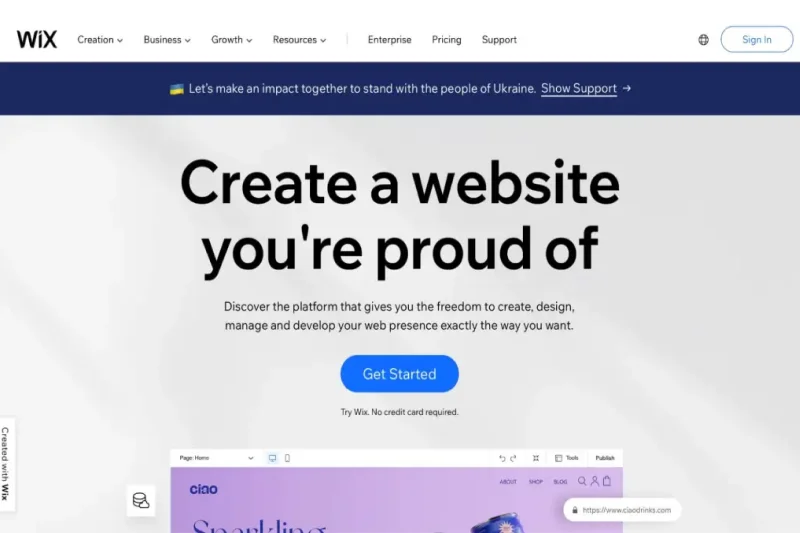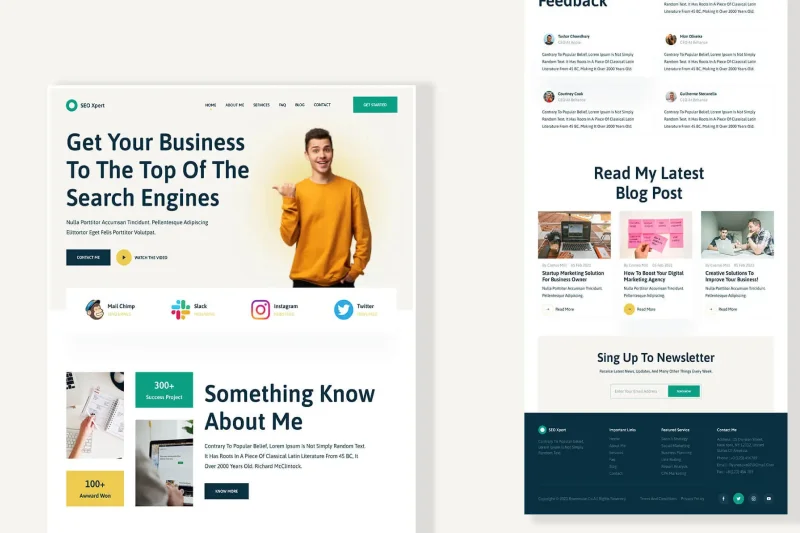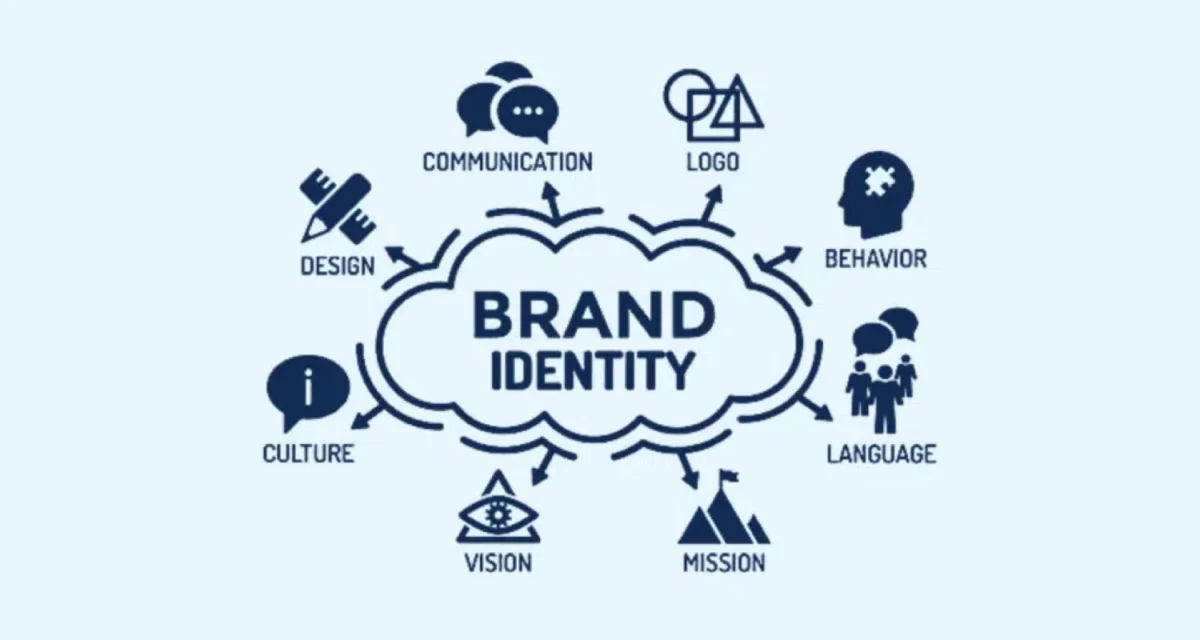Create a personal website by selecting an easy-to-use platform, designing a mobile-friendly layout, and adding essential content. Optimize it for search engines and share it through networks to showcase your skills and boost your visibility.
In today’s digital world, knowing how to make a personal website is more than just a tech skill – it’s a smart move for anyone looking to build their personal brand. Whether you’re a freelancer, job seeker, or creative professional, a personal website acts as your online resume, portfolio, and personal story all in one place.
Creating your own personal branding website helps set you apart. It gives you full control over how you present yourself to the world, increases your credibility, and boosts your chances of being discovered by clients, recruiters, or collaborators. A well-designed site also helps increase online visibility, making it easier for people to find and learn about your work, experience, and interests.
1. How to make a personal website step-by-step
If you’re ready to take control of your online presence, learning how to make a personal website is the perfect place to start. Whether you want to showcase your portfolio, build your brand, or land new opportunities, this step-by-step guide will walk you through everything you need to know – from choosing a platform to launching and growing your site.
1.1. Choosing the right platform for your personal website

The first step to build a personal website is selecting the right platform. There are plenty of personal website builder tools available that don’t require any coding skills. Popular choices include WordPress, Wix, and Squarespace.
- WordPress is a flexible and powerful option that’s great for customization.
- Wix offers an intuitive drag-and-drop interface, perfect for beginners.
- Squarespace is known for its elegant templates and built-in features.
When choosing a platform to create a personal website, consider what matters most to you – ease of use, design flexibility, or budget. Some platforms are free but offer limited features, while others may charge a monthly fee but provide more tools for design and performance. Make sure your platform supports responsive web design, so your site works well on all devices.
1.2. Selecting a domain name and website hosting service for your personal website
Once you’ve picked your platform, the next step is securing a domain name and website hosting plan. This is where your professional profile website will live online.
Secure a professional domain name that reflects your name or brand. Keep it short, easy to remember, and relevant – something like johnsmith.com works better than a long or unrelated string. This helps in building a strong personal branding website.
Next, choose a reliable website hosting provider. Some platforms like Wix and Squarespace offer hosting as part of their package. If you go with WordPress, you’ll need to select a separate host. Consider options that include SSL certificates, good uptime, and fast loading times to ensure strong website performance. Reliable hosting plays a huge role when you build a personal website, especially if you want to add features like a personal website builder, online store, or blog.
1.3. Designing your website for personal branding

Design plays a key role in how people perceive your personal branding website. A clean, professional look builds trust and leaves a strong first impression. It all starts with focusing on user experience (UX) and using responsive design.
Your site should be mobile-friendly, fast to load, and easy to navigate. Most visitors today will check your site from their phone, so it’s important that everything looks good and works smoothly on smaller screens. Make sure buttons are clickable, text is readable, and images are properly scaled when you design personal website layouts.
Next, choose a template or theme that matches your personal style. Most personal website builder platforms like Wix, WordPress, GoSELL and Squarespace offer a variety of templates. Look for one that feels modern, clear, and aligns with your personal or professional goals. Don’t hesitate to tweak colors, fonts, and layout to reflect your personality. This step helps create a cohesive and memorable professional profile website.
1.4. Developing essential pages for your personal website
Every strong personal website has a few must-have pages. These sections help tell your story and allow visitors to get to know you better. When you’re ready to showcase personal projects, make sure these key pages are part of your site.
- About Me: This is your chance to connect with visitors on a personal level. Write a short story about who you are, your background, and what drives you. A well-written About Me page is at the heart of any strong personal branding website.
- Portfolio: Your online portfolio should display your best work. Whether it’s design, writing, photography, or development, make sure your samples are easy to browse and visually appealing. Use brief descriptions to explain each project and the impact it made. This page is essential to showcase personal projects and demonstrate your skills.
- Resume/CV: Include a section or page where you present your qualifications. Highlight your experience, education, certifications, and achievements. This helps build credibility and reinforces your professional profile website.
Together, these pages build trust and give visitors a clear idea of who you are and what you offer. They also help increase online visibility when optimized properly.
1.5. Optimizing for search engines (SEO) for your personal website

Once your site is built, it’s time to help people find it. Learning how to make a personal website is just the start – search engine optimization (SEO) ensures your website actually gets seen.
Start with keyword research. Use tools like Google Keyword Planner to discover what terms people search for when looking for someone with your skills. Then, integrate keywords naturally into your content, page titles, and headings to increase online visibility.
Make sure to optimize:
- Meta tags: Write clear, relevant titles and descriptions for each page.
- Images: Add descriptive alt text and compress image sizes for faster load times.
- URLs: Keep them short, clean, and relevant to your content.
These small steps can make a big difference in how your site ranks and how easy it is for people to find your professional profile website.
1.6. Integrating additional features on your personal website
Beyond basic design and content, you can improve your personal website with extra features that enhance both performance and experience.
Enhance functionality with useful plugins and widgets. If you’re using WordPress, consider SEO plugins like Yoast SEO or All in One SEO. These tools help with keyword placement and readability. Social media integration plugins make it easy to link your profiles and allow visitors to share your content. If you’re using Wix or Squarespace, many of these features are already built in or available through add-ons.
Website security is just as important. Your professional profile website should use SSL certificates to keep data secure and build visitor trust. Most hosting providers include SSL as part of their package, but always double-check. Also, keep your site and plugins updated regularly to avoid security risks.
Adding these features helps create a safer, more professional, and user-friendly experience – key steps when you build personal website that stands out.
1.7. Launching and promoting your website to increase online visibility

Before you go live, it’s important to test everything. A smooth launch makes a great first impression.
Start with a pre-launch checklist. Check all links, buttons, and forms. Make sure your site is mobile-friendly, loads fast, and doesn’t have any typos or broken images. Test your site on different browsers and devices to catch any issues early. This ensures your personal website is ready for visitors.
Once everything looks good, hit publish. But don’t stop there – now it’s time to promote your website to increase online visibility.
Use social media to share your new site. Post on LinkedIn, Twitter, and Instagram, especially if you’re showcasing a personal branding website or online portfolio. Join groups and communities related to your field.
Don’t be shy about networking – email your contacts and let them know you’ve launched. A well-shared launch can bring in traffic fast and help your professional profile website gain momentum.
1.8. Maintaining and updating your website for long-term success
Launching your personal website is just the beginning. To keep it valuable, you’ll need to update and manage it regularly.
Add new content often. This could be blog posts, updated portfolio pieces, new skills on your resume, or small design tweaks. Regular updates keep your site fresh and show that you’re active and evolving. It’s one of the easiest ways to increase online visibility and stay relevant.
Use tools like Google Analytics to track how visitors use your site. You’ll see which pages they visit, how long they stay, and where they come from. This helps you learn what’s working and what needs improvement on your personal branding website.
By keeping your content fresh and monitoring your site’s performance, your professional profile website will continue to grow and bring in new opportunities.
2. Conclusion
Learning how to make a personal website is more than just a technical task – it’s an investment in your future. With the right platform, a strong domain name, thoughtful design, and strategic SEO, you can create a professional online space that tells your story, builds your credibility, and sets you apart in your field. Whether you’re showcasing personal projects, sharing your resume, or building a portfolio, your website becomes the central hub of your personal brand. By following this step-by-step guide, you’re now equipped with the tools and insights needed to not only launch your website but maintain and grow it for long-term success. Start building your online presence today.
3. FAQs
3.1. How to create a personal website without coding?
You don’t need to be a tech expert. Platforms like Wix and Squarespace are great personal website builder tools. They offer drag-and-drop editors, built-in templates, and all-in-one hosting to help you create personal website without writing a single line of code.
3.2. What are the best platforms to build a personal website?
It depends on your needs. WordPress offers the most customization if you’re comfortable with some tech setup. Wix is easy to use and very visual. Squarespace is known for its stylish templates. All three are great options to design personal website that reflects your personal brand and style.
3.2. What are the essential pages for a professional profile website?
Start with these four:
- About Me: Share your background and passions.
- Portfolio: Highlight your best work and showcase personal projects.
- Resume/CV: Detail your experience and qualifications.
- Contact: Make it easy for people to reach you.
These pages help tell your story and increase online visibility.
3.3. How to showcase your portfolio on your personal website effectively?
Use clean layouts and high-quality visuals. Organize your work into categories. Write brief descriptions explaining your role and the results. A strong online portfolio helps visitors understand your skills at a glance.
3.4. How can a personal website increase online visibility?
By using SEO strategies. Add keywords, optimize meta tags, and use clear URLs. Also, share your site through social media, emails, and networking. A well-optimized personal website helps you get found – and remembered.



